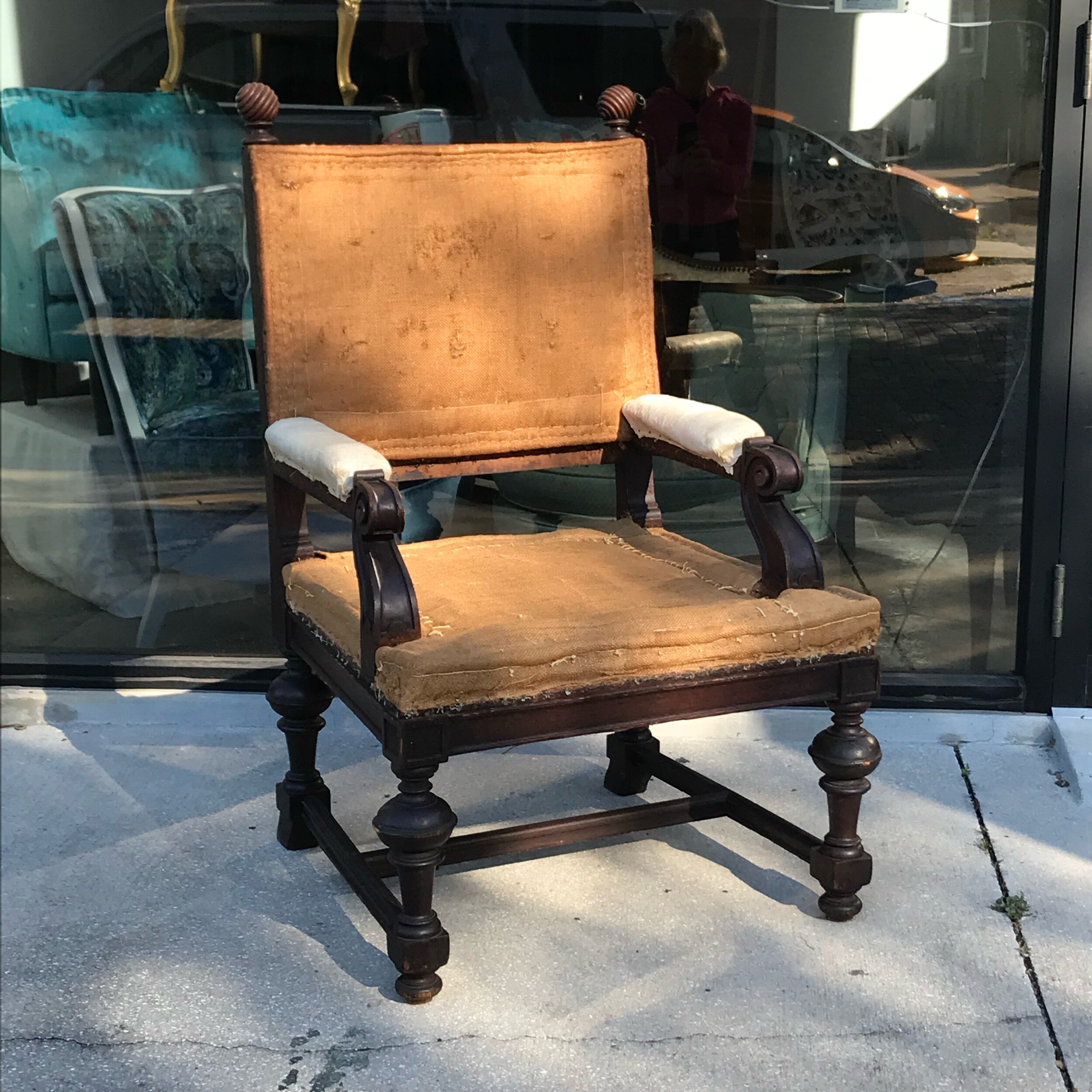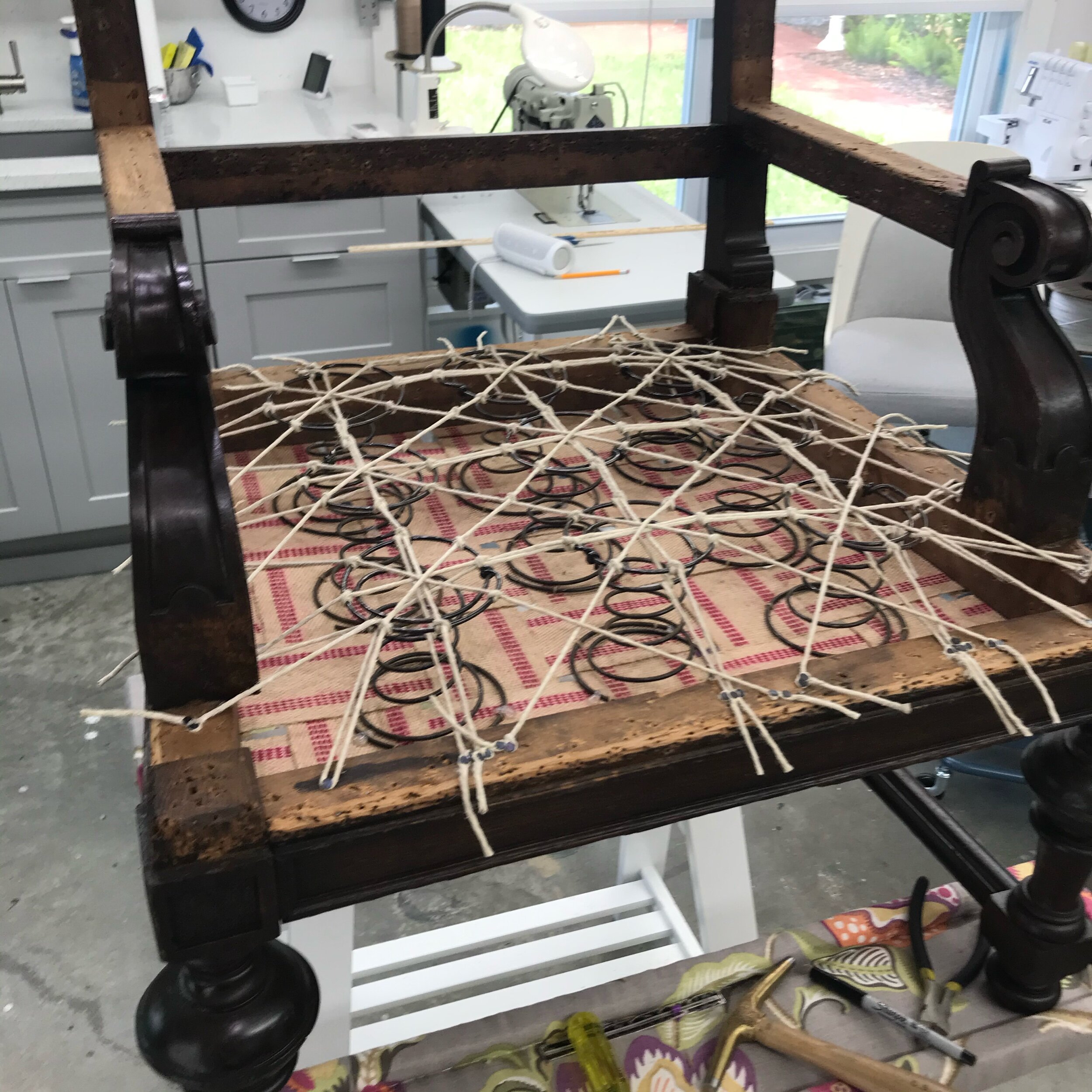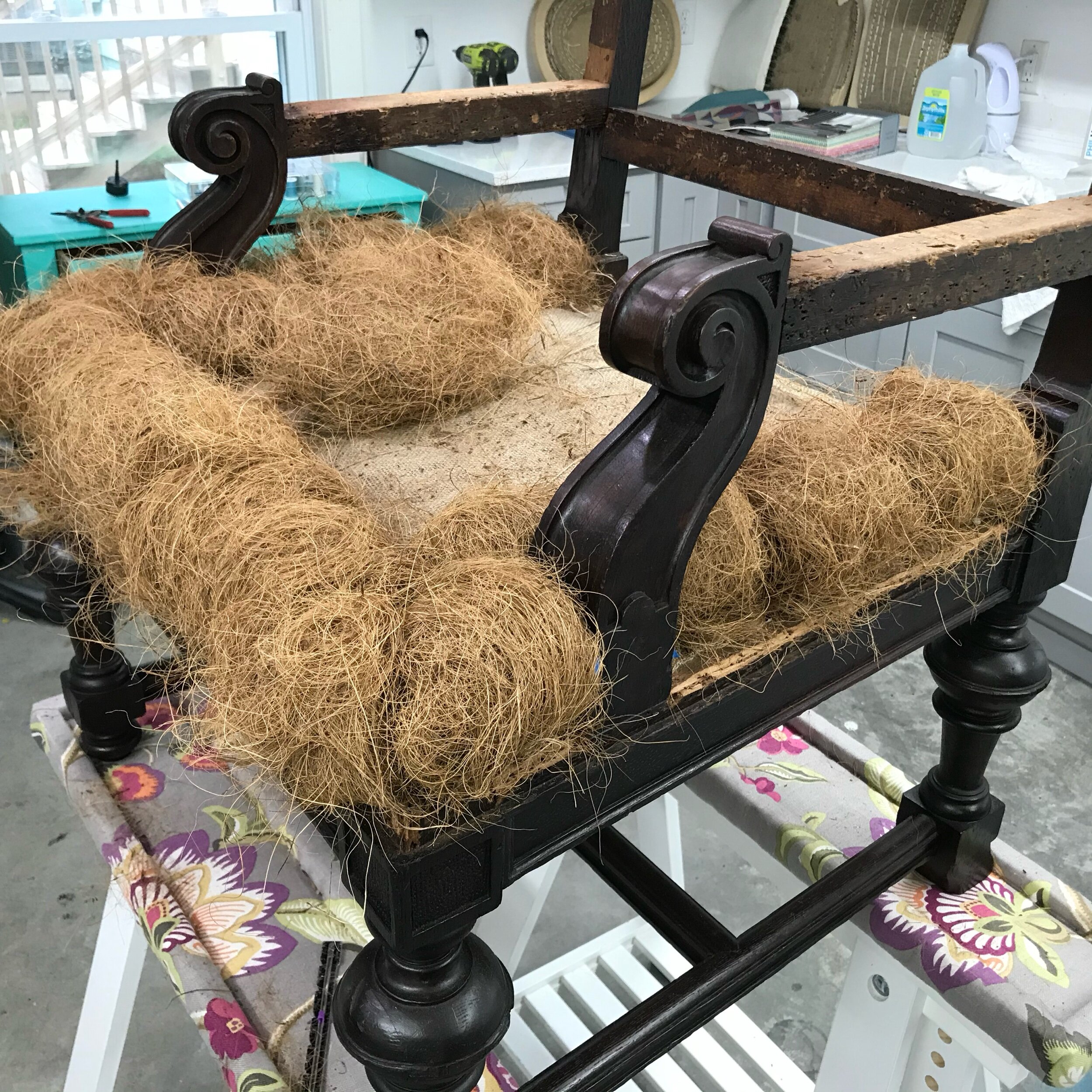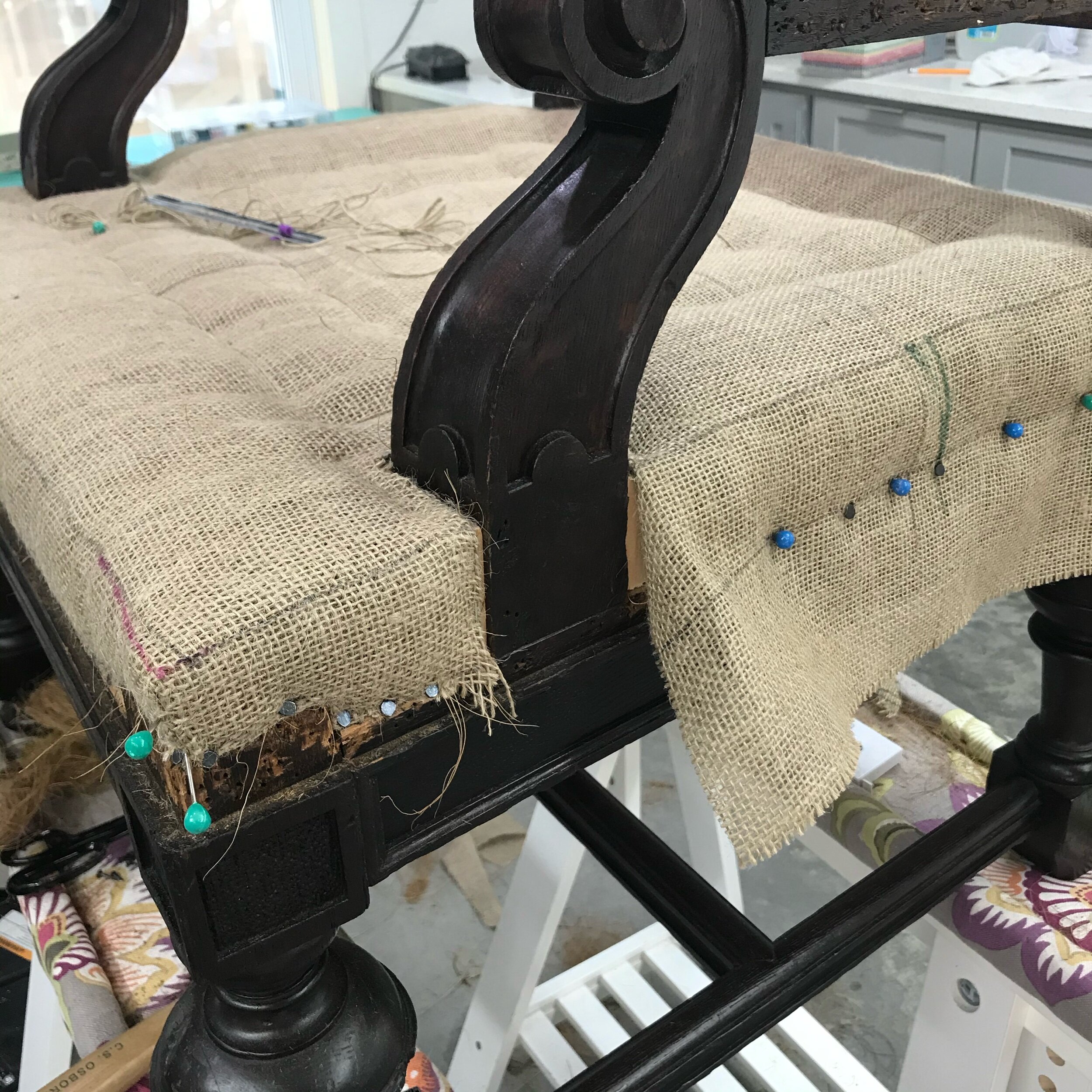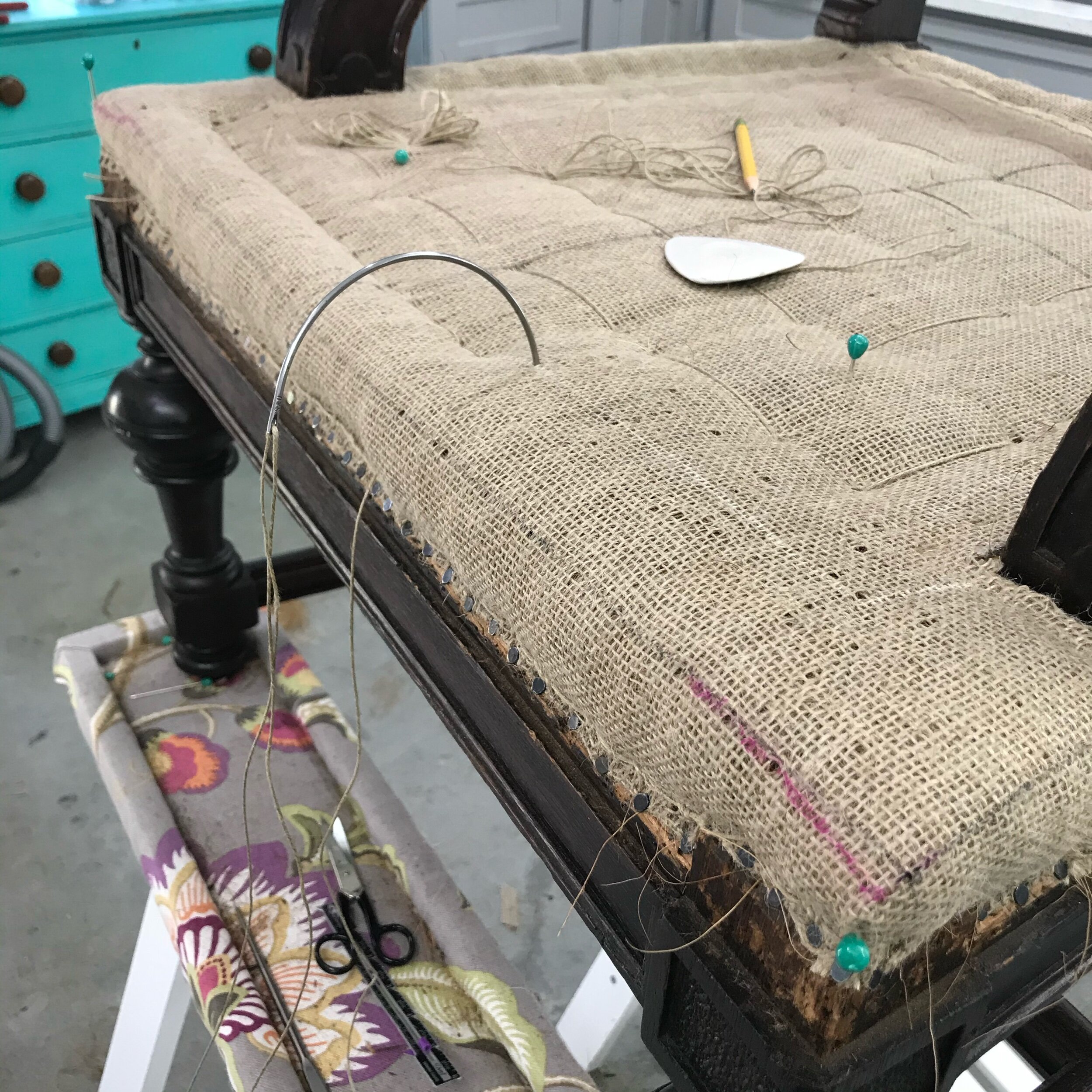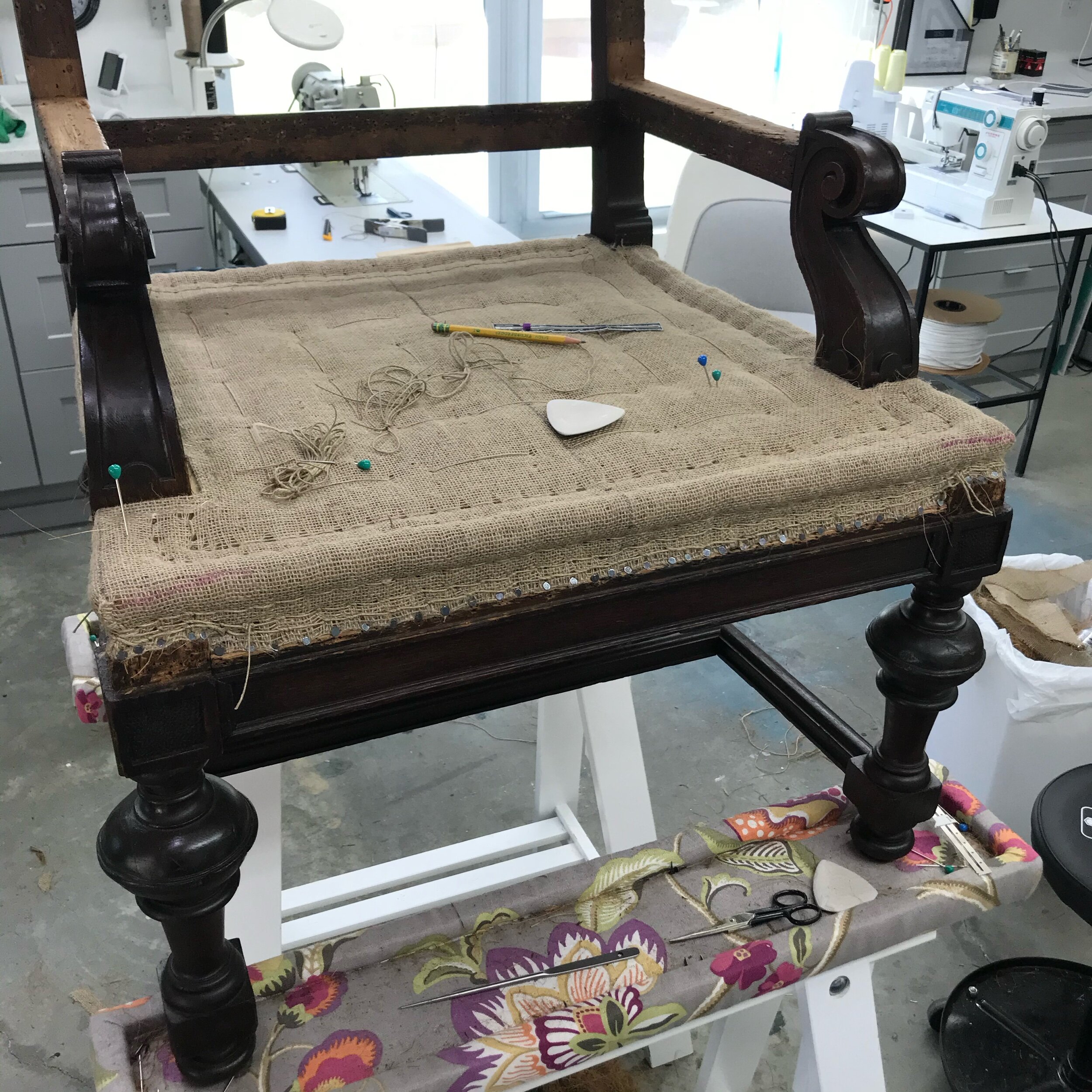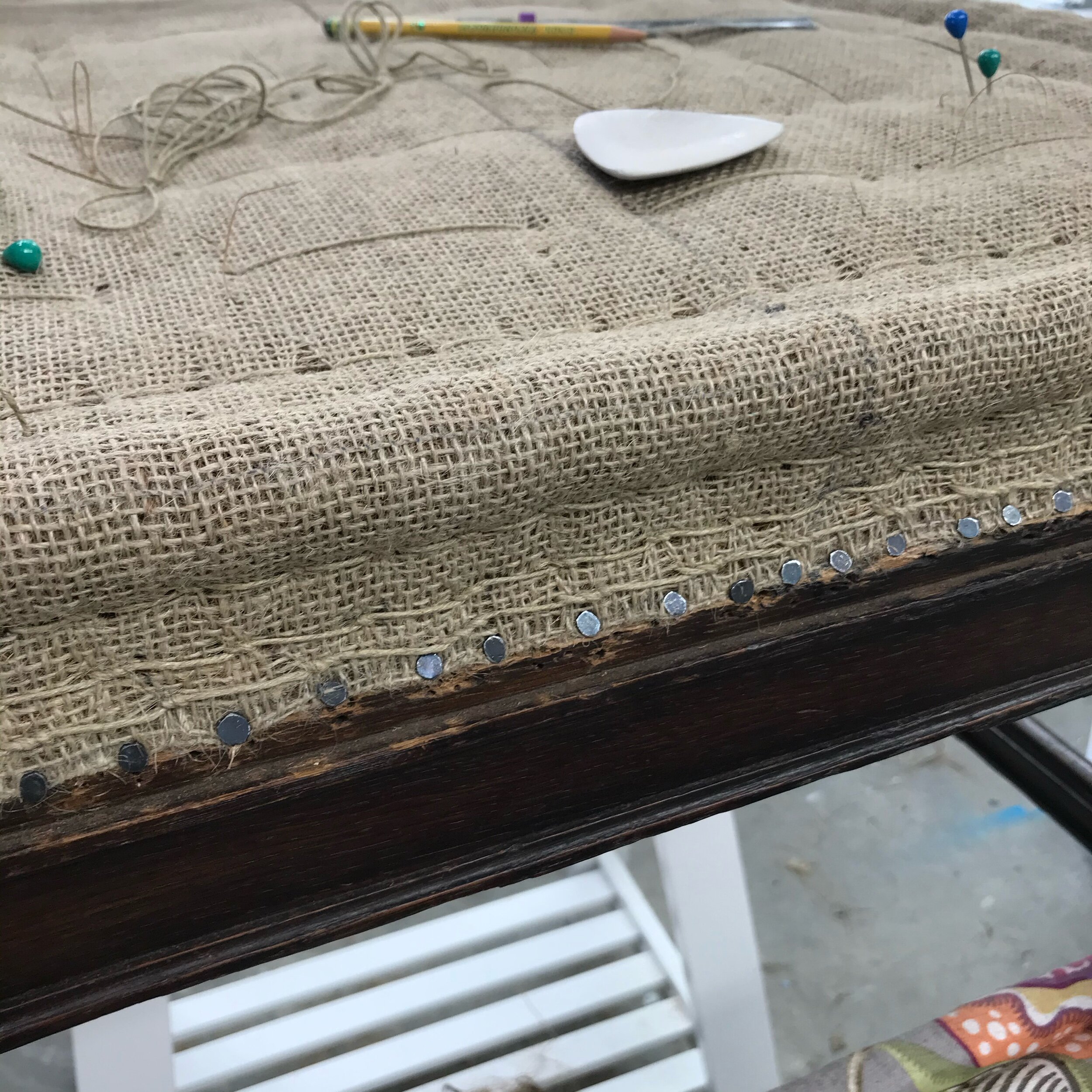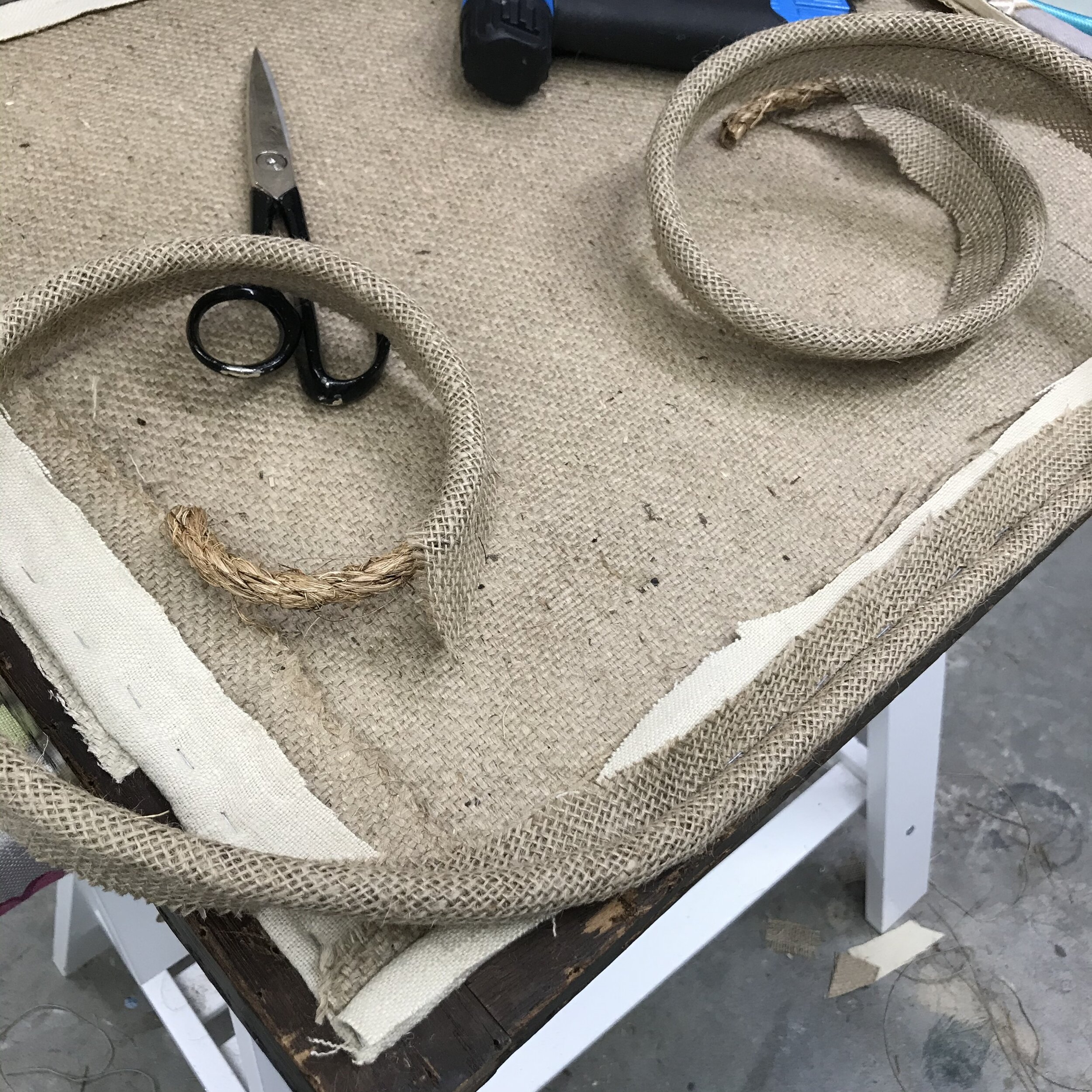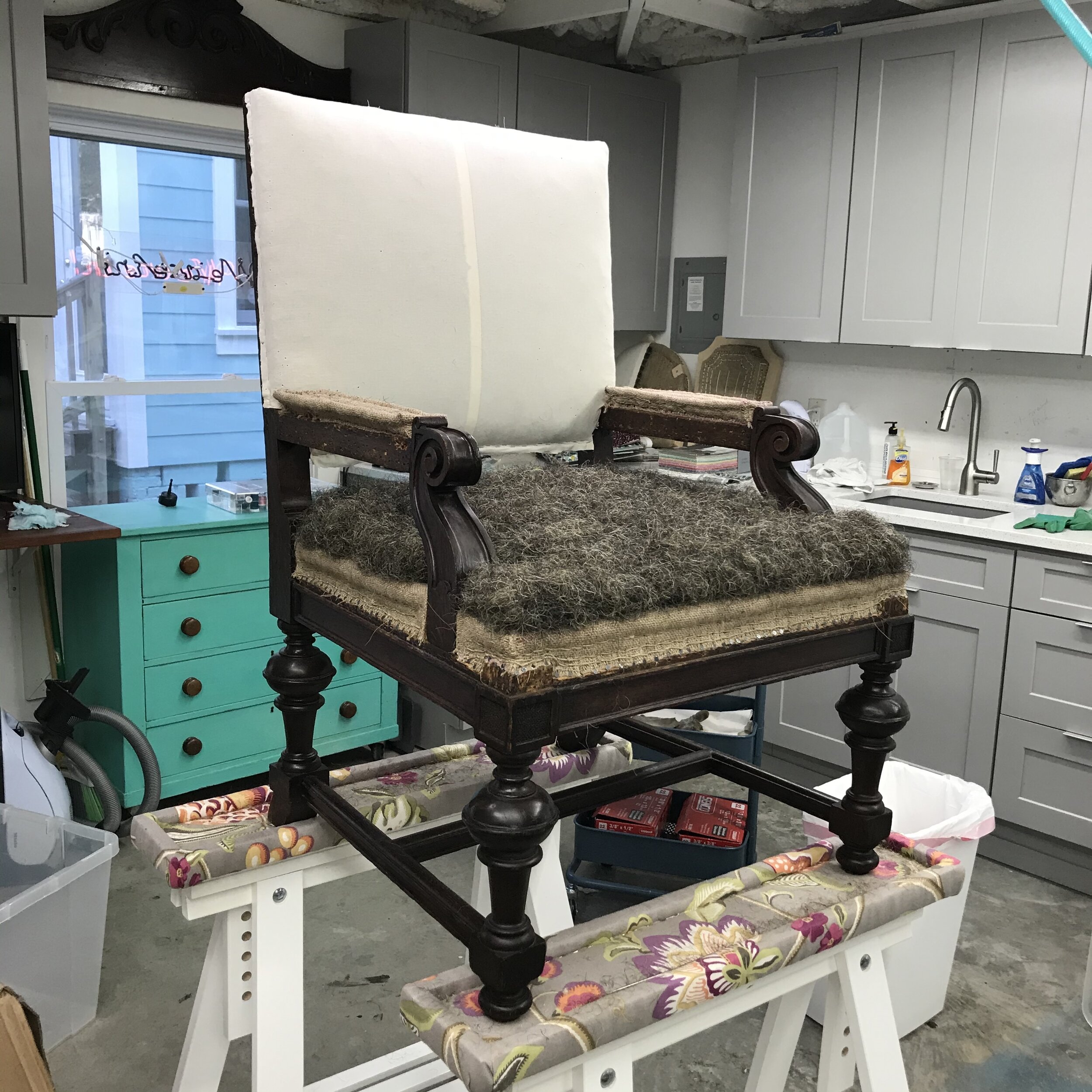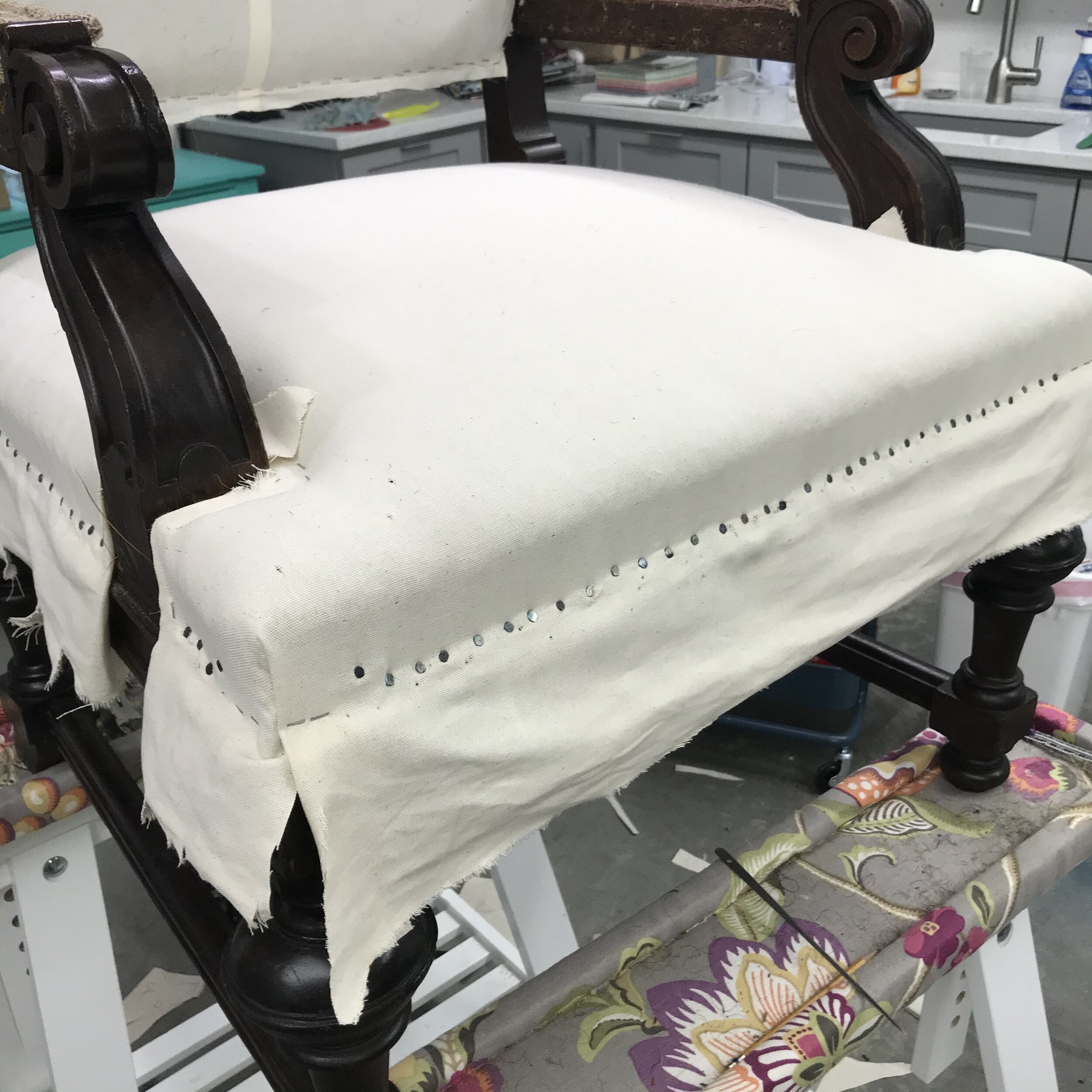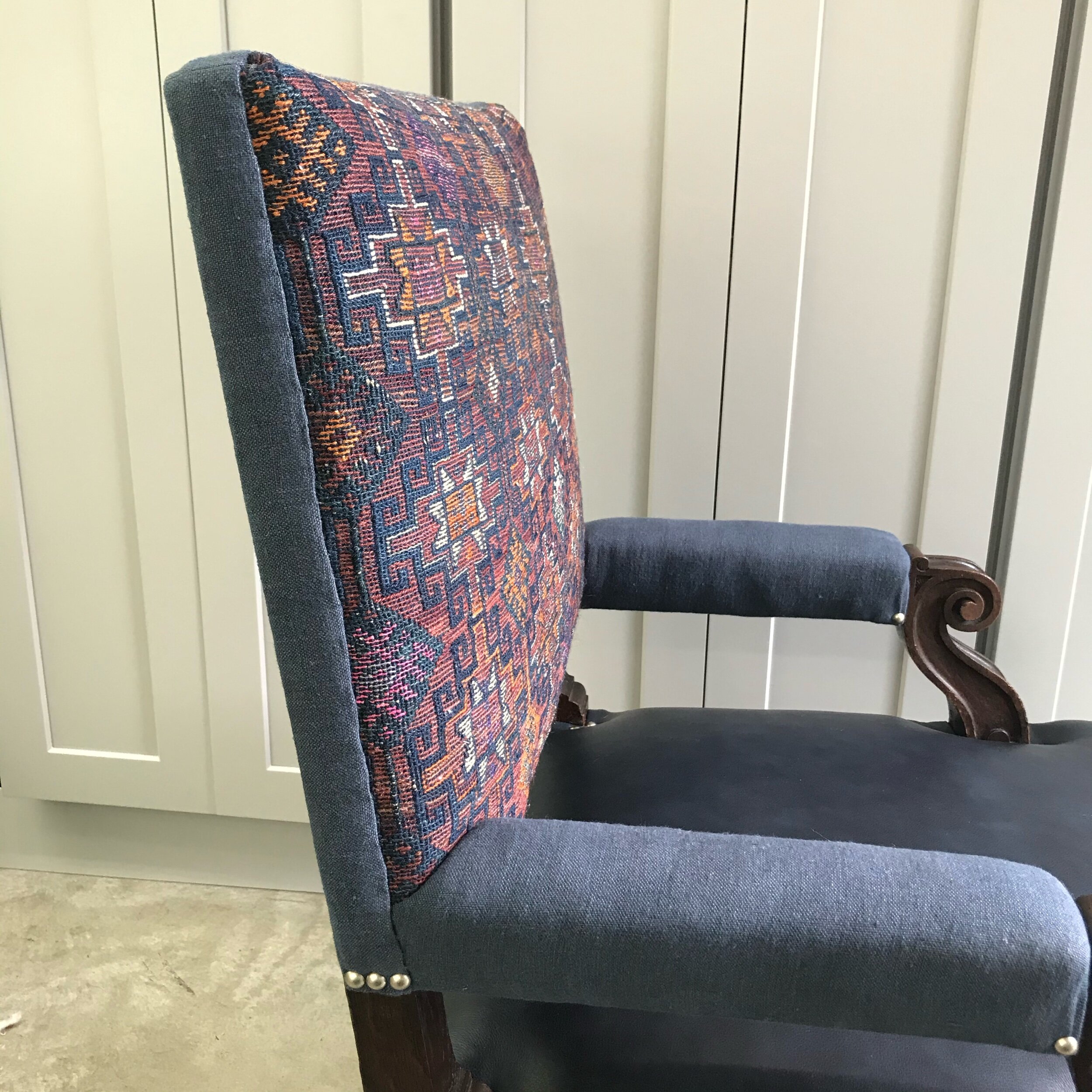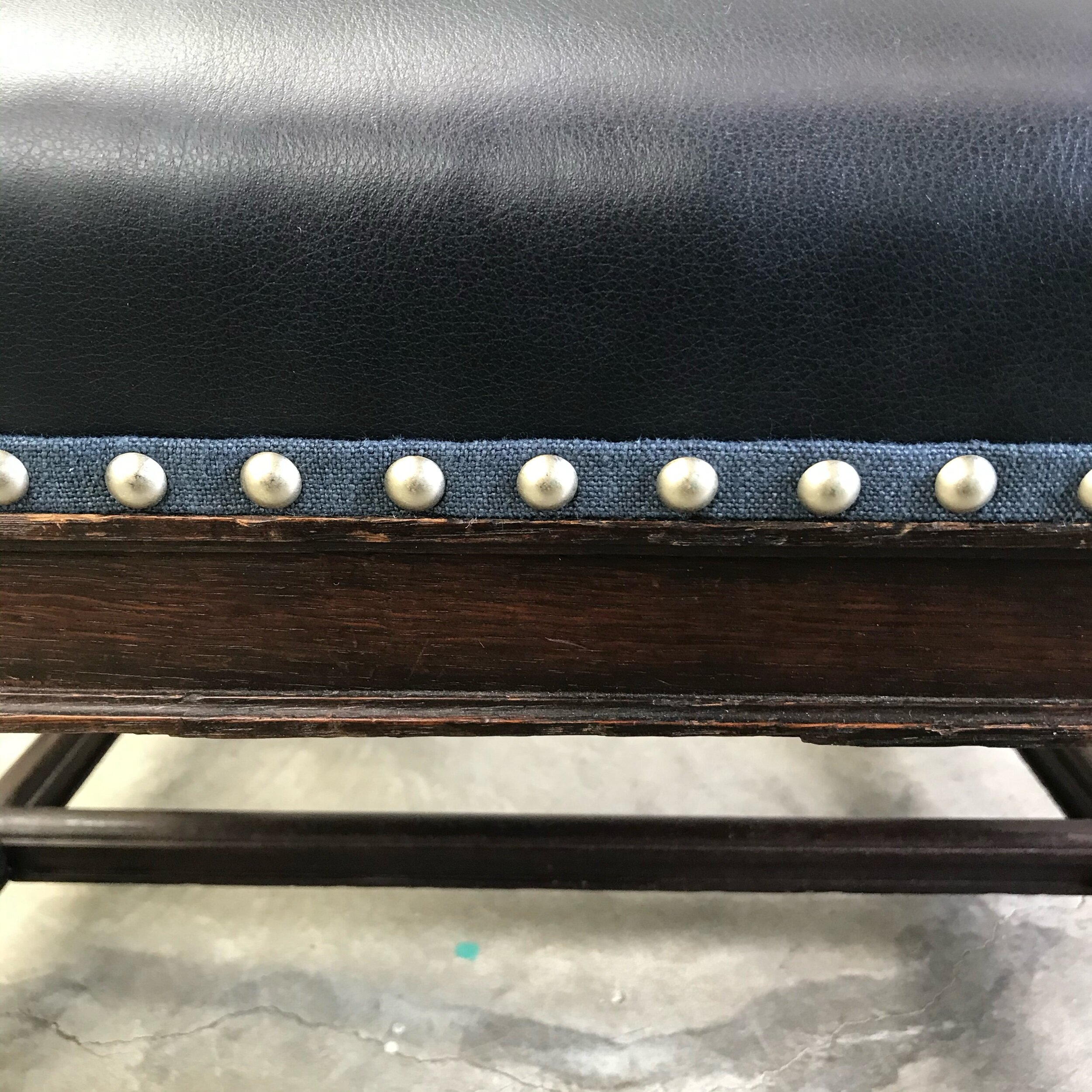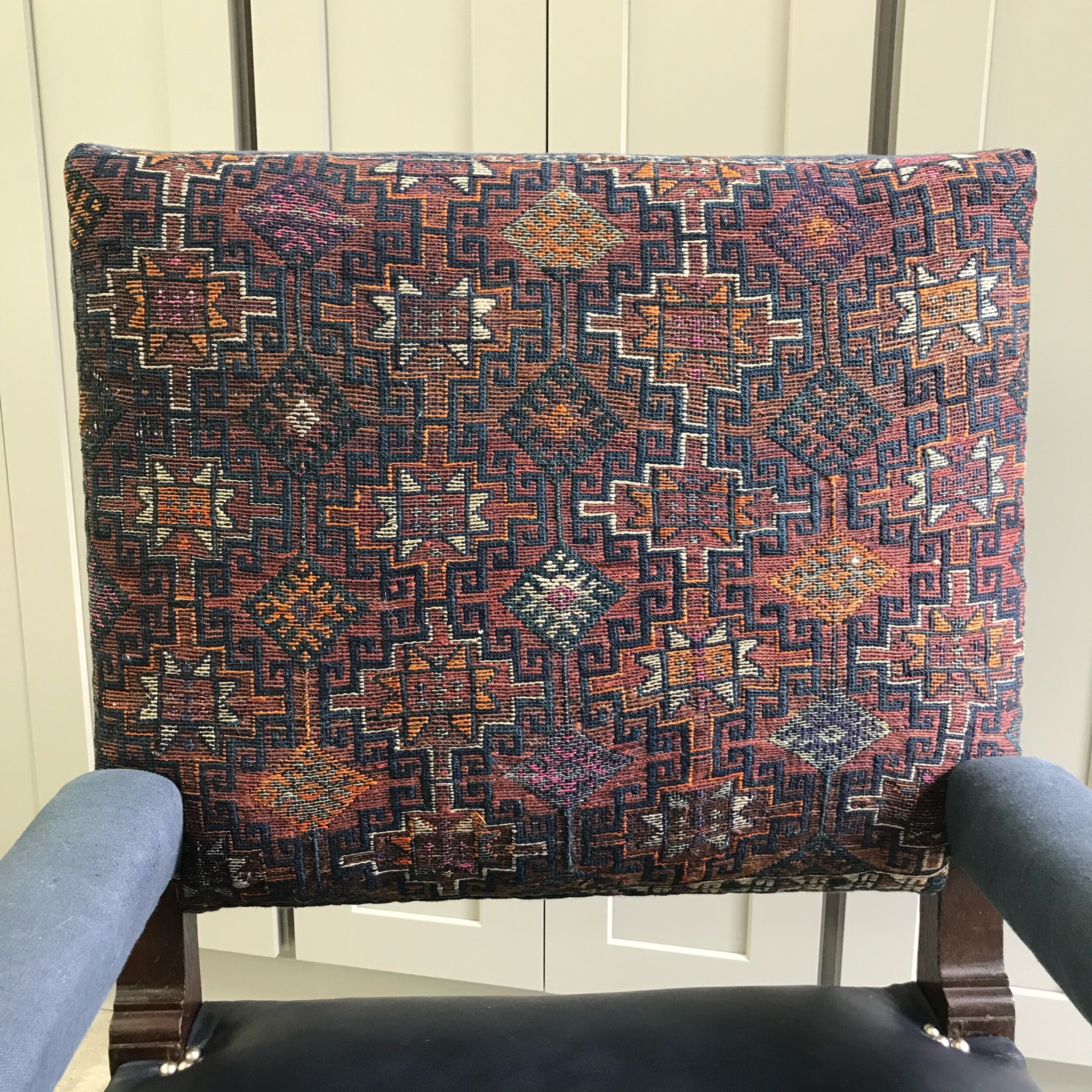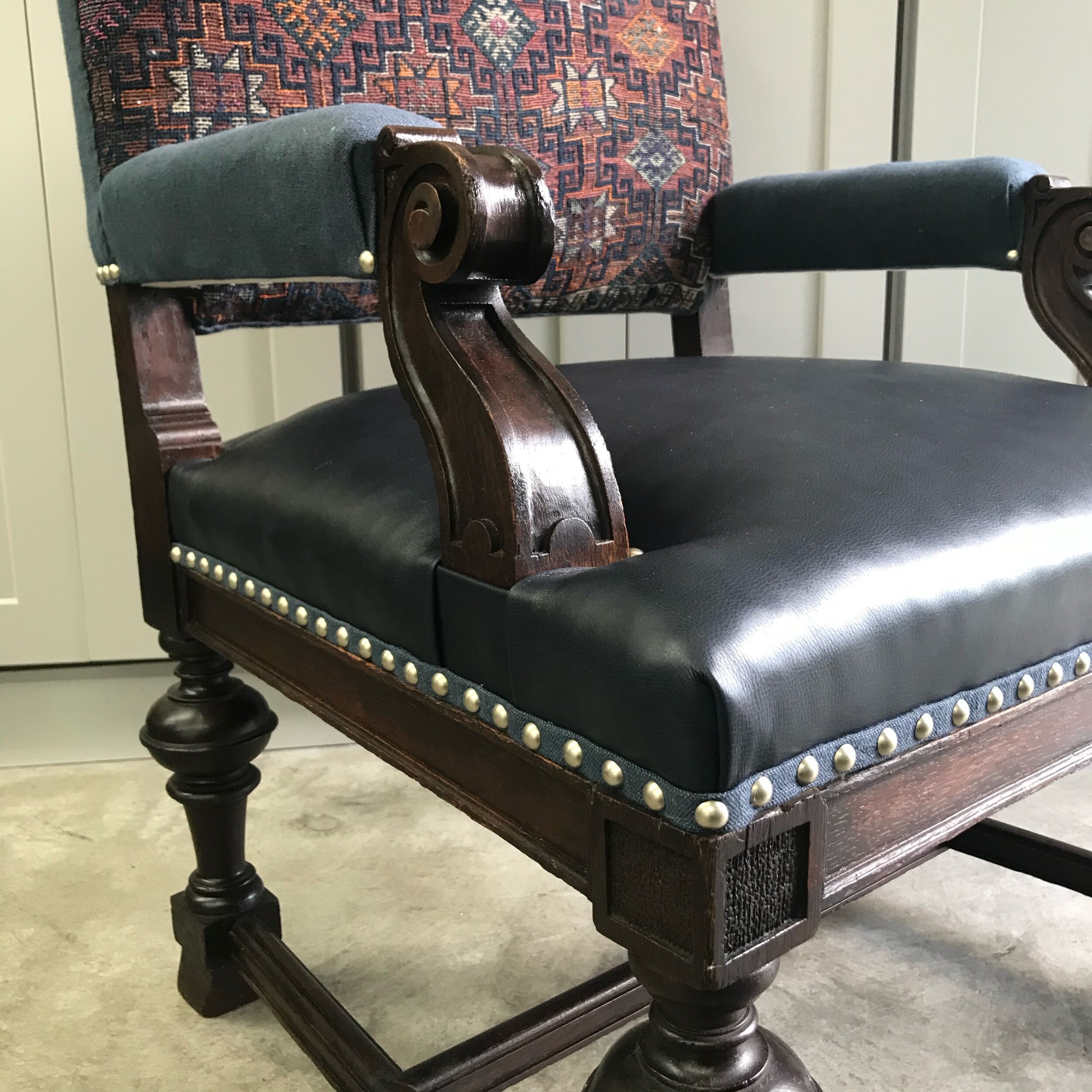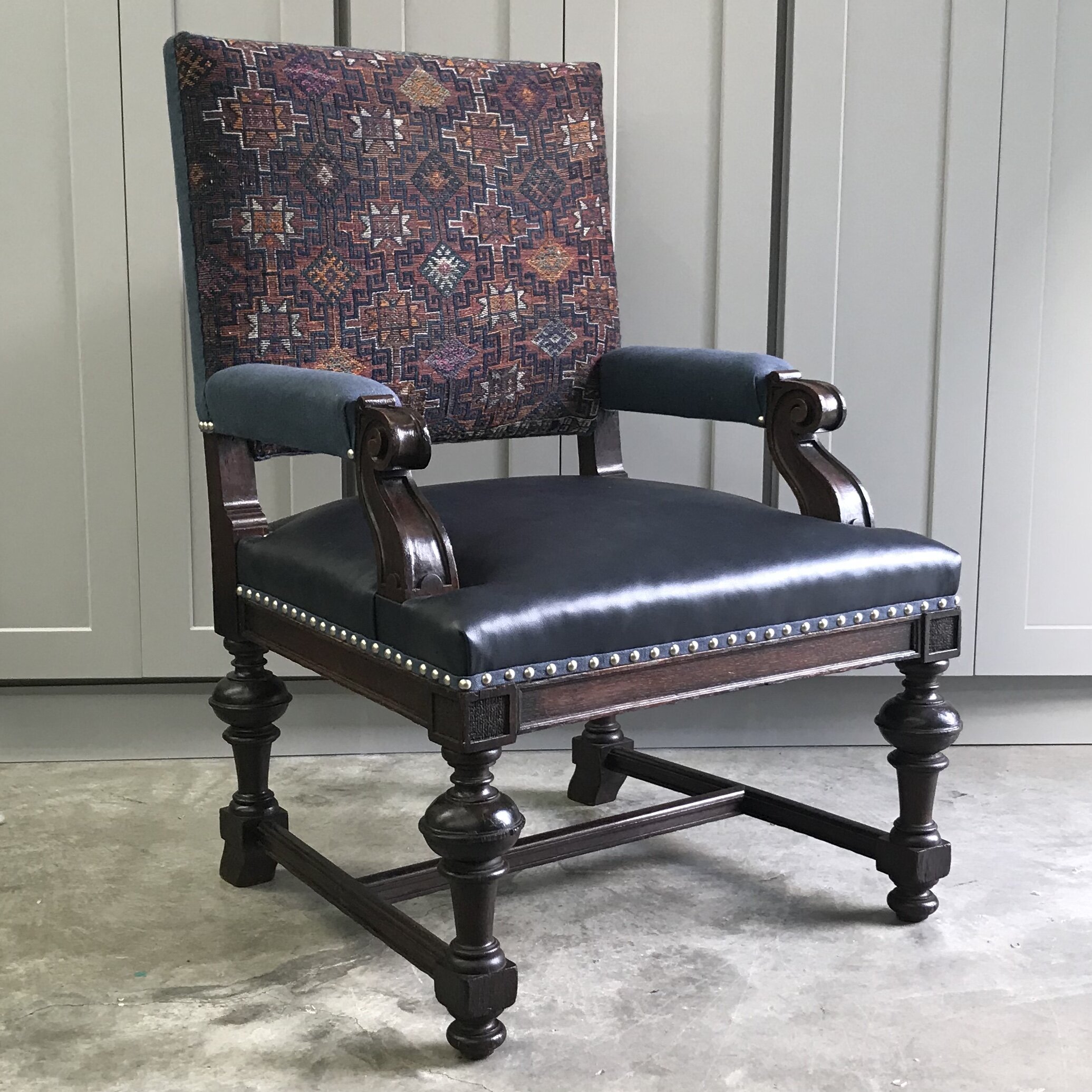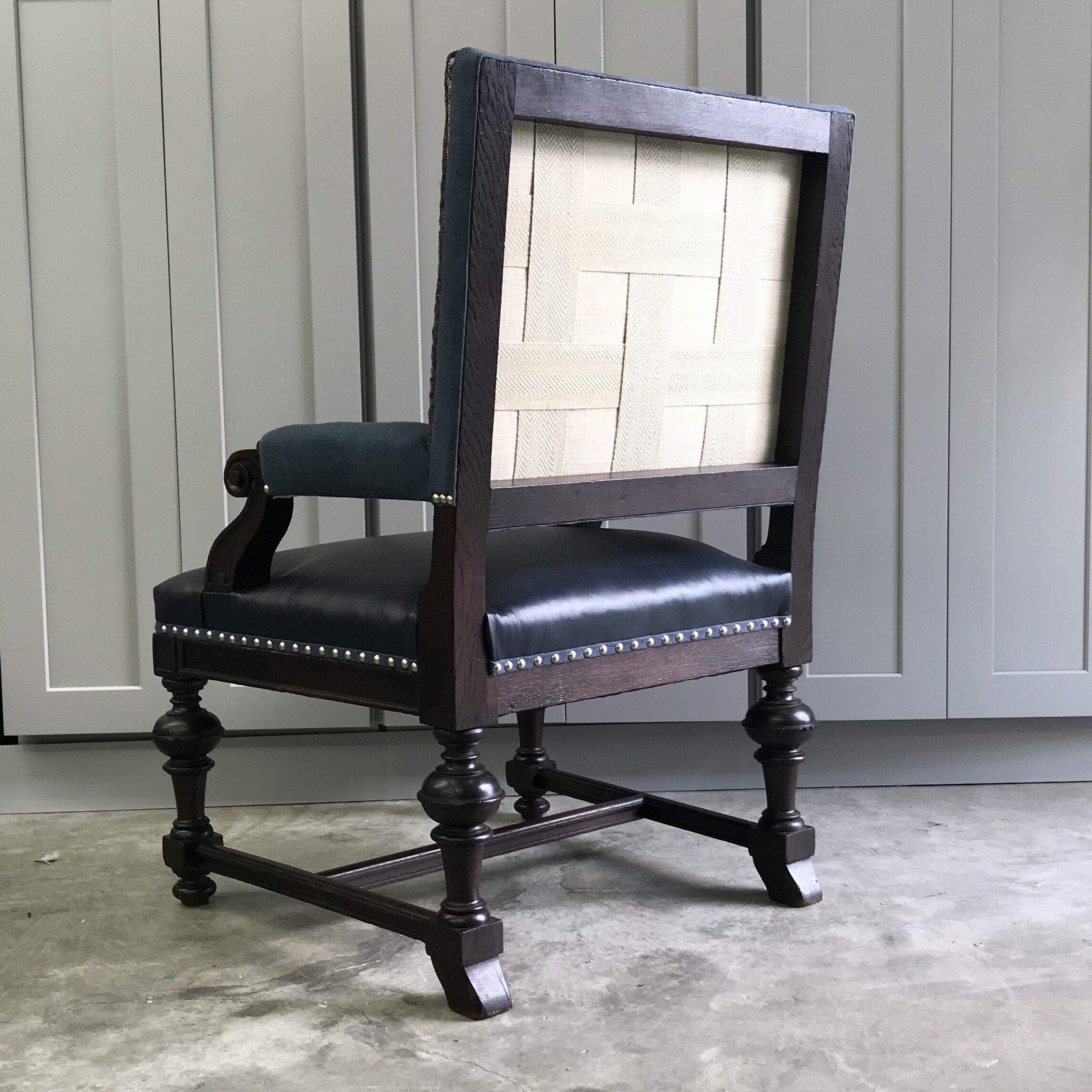Upholstering with Horsehair Stuffing: The Stately Oak Armchair
Like many creative upholsterers, I get a little thrill when I see a promising old chair frame. If it’s already well-loved, I can see it in a new outfit. If it’s a bare frame, I don’t have a lot of trouble visualizing what it would look like all padded up again. Sometimes, when I encounter it, it’s only half dressed, or half-undressed,….like this one.
The old oak frame, with its whorled arms and balustrade legs, struck me immediately as a stately library chair in its previous incarnation. In my mind, its leather seat could have been occupied by a bearded, bespectacled, pony-tailed professor of literature, sipping espresso while thumbing his early edition of an erudite volume in his thick-beamed, paneled library. I thought it would be fun to get the chair back to that vision, but with a bit of a creative twist.
The Camel, the Horse, the Sheep, and the Cow Work Together
So, since I think a piece of upholstered furniture is vastly improved by using more than one color, texture, or pattern, wouldn’t it stand to reason that using more than one material would add even more interest? I dug up an antique woven wool kilim camel saddlebag bought at auction many moons ago, and it was the perfect size for the inside back. That old textile would set the tone for my library chair. Navy blue leather would cover the seat, and midnight blue linen was perfect for the arms and some accent banding. The insides? Horsehair, coir, and burlap, of course, stitched in place with linen twine and secured with tacks! I appreciate these authentic methods when I want an antique piece to have integrity and longevity. No one sees it, but it will last a very long time, keeping its shape and feel nicely.
The Process
While I can’t cover every step, here’s an overview of my thoughts and techniques used in upholstering this chair in a traditional manner. Because the chair’s original stuffing was done in a kind of patchy way, and the burlap was quite worn in places, I chose not to conserve and tore the chair down to its bones. After tying the coiled springs eight ways, and securing the twines with tacks, I covered the springs with burlap. To this, I attached balled wads of coir fiber, wrapping them around a continuous linen tie that runs in and out of the burlap around the seat. These wads got fluffed—eliminating the obvious separations between them—and covered with burlap, shaped to what I hoped to achieve (and did!) with stitches. Tacked down, the stitching began with a blind row all around, then several rows of top stitching, using a large, curved needle and finer linen twine. The twine I prefer to use for this had to be imported from France, because no one in the U.S. supplies it.
Stitching, Stitching, and More Stitching
In traditional upholstery stitching, the coir (or sometimes hair) under the burlap is stitched at a 45-degree angle from the frame to pull the fibers tighter and forward with each consecutive row. This causes a firm and rounded edge roll, integrated into the finished seat. The more rows, the tighter and thinner the edge roll, and the more square the seat profile becomes. French upholsterers have a technique that ends in a feather stitch, which is also known as a blanket stitch. It’s more complex and results in a very crisp edge, which was not necessary here. I wanted a rounded front edge.
Deconstruction? Just say yes, in moderation.
For the picture-frame outside back, I wanted an exposed webbing for interest. This is hemp webbing, in ivory herringbone. Very pretty for show, it also provides the initial support for the back of the chair, but needed to look finished. I affixed a piece of ivory linen in back of the webbing, also to show. As additional support, I stapled a tightly woven burlap behind that, working my way inward. For an edge roll here, and a less structured look, I wrapped a 1/2” hemp rope with burlap to staple on. With the horsehair stuffing bridled in, I covered it with muslin and regulated the hair to get the exact shape I wanted for the inside back.
Bridled in over the stitched foundation, the seat’s horsehair is fluffed and teased and covered in muslin, regulated to remove any lumps or holes, and tacked into the final shape of the seat. The tied coiled springs, coir foundation, and horsehair work together to provide a comfortable seat that will last a very long time. Over the muslin went a cotton layer and new blue pebbled leather.
The chair’s arms are stitched as well. I made a tube of burlap, stapled it to the arm, and filled it with horsehair from one end. When it was tight, I stitched the edges in several rows, flattening and widening the arm pad, giving it the shape I was seeking. On top of this went more fluffed horsehair and a muslin cover, making way for a cotton layer and the final blue linen.
Details, details…
I think that in order to make an interesting chair to look at, details count. Back-tacking a blue linen band to the frame at the outside, I hand stitched it to cover where I attached the kilim around the frame. The antique woven wool textile is appealingly crooked in the woven pattern, which indicates to me that it was made by an actual person (not necessarily a pro), perhaps as the saddlebag for their very own camel! Blue linen also serves as a trim under the pewter nailheads, which covers the raw edges of the leather seat in an eye-catching way.
Horsehair is wonderful to work with—I use it whenever I can. Traditional stitching, while it extends the time spent on a piece substantially, and thereby increases the cost, gives a refined result one cannot achieve with foam. Not everyone appreciates the details that go into a traditionally upholstered piece, but when you do, and you know that’s how your chair is made, it’s easy to consider your piece particularly noteworthy.
This chair is for sale. Please contact me for details.
Let me make you a chair!
My studio in St. Petersburg, Florida is open for discerning clients who love their furniture! Let’s find you a vintage or antique piece, and make a statement out of it! My collection is full of unusual, well-made furniture that deserve a second chance. Modern or traditional, we can source fabrics for you for that will stand out for your custom sofa, settee or chair!

